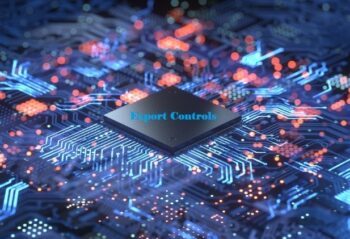By Bruce Leeds, Senior Counsel, Braumiller Law Group
Determining what export controls apply to semiconductor devices can be a challenging task. Most controls on semiconductor devices are found in Export Commodity Classification Number (ECCN) 3A001 of the Commerce Control List (CCL) in the Export Administration Regulations (EAR). That ECCN has nearly 16 pages of detailed controls on many types of semiconductors. Classifying articles in that category and determining what licenses or exceptions may apply is not easy.
First things first: Make sure the semiconductors to be exported are not subject to the International Traffic in Arms Regulations (ITAR). If the devices will be used in a military or space application, they may be subject to ITAR controls. Better read the fine print in the US Munitions List to find out.
Some things you will need for classification:
- The latest version of the CCL. That is best found at the website of the Bureau of Industry & Security (BIS). The CCL provisions can change frequently. Go to bis.doc.com and click on the Regulations tab to bring up the CCL.
- Unless you are an electrical engineer you will need access to one because 3A001 is written in very technical terms. Make him/her your friend and buy them lunch because you are going to need their assistance.
Let’s start by looking at how ECCN 3A001 is organized.
ECCN 3A001 begins with notes on the control status of devices that are unalterably programed or specially designed and wafers for which the function has been determined.
Next is a list of controls and the reasons for control, broken down according to the classification in 3A001; most at the 7or 9-character level (such as 3A001.a.5.b.2). Thus, to determine what controls may apply, it is necessary to classify the semiconductor in the most detailed provision available, then check back to the first page and look for that classification under what could be several reasons for control. The combination of reason for control and use of the Country Chart in Supplement 1 Part 738 will determine if the device requires an export license.
The next subject at the beginning of ECCN 3A001 is license exceptions. License exceptions permit articles that would ordinarily require license to be exported without a license under the exception. Certain semiconductor devices classified under specific 7 or 9-character ECCNs under 3A001 may qualify for license exceptions LVS, GBS or STA. Before using a license exception, be sure that the article is classified correctly under the most detailed 3A001 classification, and that you carefully review the requirements for use of license exceptions in Part 740 of the EAR.
Following the available license exceptions are some related controls and related definitions. These could be useful in classifying semiconductor devices.
Finally, we get to the provisions in the subcategories under ECCN 3A001. This ECCN is broken down into several subcategories:
- Integrated circuits. This goes on in detail for several pages.
- Microwave or millimeter wave items. The details of the devices covered also appear on several pages.
- Acoustic wave devices.
- Devices containing components manufactured from superconductive materials.
- High energy devices, including superconductive magnets, high energy storage capacitors and solar cells.
- Rotary input type absolute position encoders.
- Solid-state pulsed power switching thyristor devices and thyristor modules.
- Solid-state power semiconductor switches, diodes, or modules.
- Intensity, amplitude, or phase electro-optic modulators.
Thus, the first step in classifying a device under 3A001 is to determine which subcategory best describes it. That will narrow the search. From there you may need the assistance of your new friend, the electronics engineer.
Here are some examples of the descriptions you may encounter when dealing with 3A001:
“a.12. Fast Fourier Transform (FFT) processors having a rated execution time for an N-point complex FFT of less than (N log2N)/20,480 ms, where N is the number of points.”
“b.10. Oscillators or oscillator assemblies, specified to operate with a single sideband (SSB) phase noise, in dBc/Hz, less (better) than -(126 + 20log10F -20log10f) anywhere within the range of 10 Hz ≤ F ≤ 10 kHz”
Time to put that engineer on your Christmas gift list.
The end result of all this is a 7 or 9-character ECCN classification of the device. Consult the chart at the beginning of 3A001 for the “Reason for Control” associated with the detailed ECCN classification, then go to the Country Chart to determine if a license is required. If this process indicates a license is required check to see if the device qualifies for a license exception and that it meets all the requirements for use of the exception. If a license exception is not available, start applying for an export license.
Wasn’t that easy?
Are we done? Heck no! Be aware that CCL Category 3 includes four subcategories. Subcategory A, into which 3A001 falls, covers the products themselves. What you are planning may not be semiconductor devices, but something associated with making semiconductors.
There are four other subcategories in Category 3 of the CCL:
B – Test, inspection and production equipment for manufacturing semiconductors,
C – Materials used to produce semiconductors,
D – Software used to produce semiconductors, and
E – Technology used to produce semiconductors.
If what is planned for export falls into one of these subcategories, it may also be subject to export controls.
The bottom line of all this is that determining whether semiconductors are subject to export controls is not an easy process. It can be very complex and will require collaboration between the export compliance and engineering personnel to be compliant and successful.
Introducing the new Digital Magazine for June 2021. Get the inside scoop on the Braumiller Law Group & Braumiller Consulting Group “peeps.” Expertise in International Trade Compliance.
Click the link: https://www.flipsnack.com/braumillerlaw2021/braumiller-law-consulting-group-digital-magazine-june/full-view.html
Once you initially click, the best view will be “Full Screen” mode…..which is located in the lower right hand corner of your screen.

























